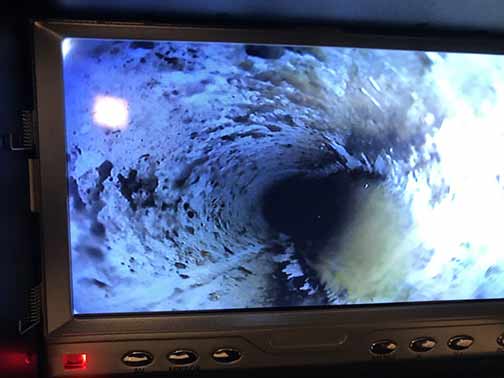Understanding Sewer Line Problems: The Basics
Sewer line problems can cause significant disruptions to daily life, leading to unpleasant odors, slow drainage, and even property damage. Understanding the basics of sewer line issues is the first step in addressing these problems effectively. Sewer lines are underground pipes that transport wastewater from homes and businesses to municipal treatment facilities. Over time, these pipes can become clogged, cracked, or damaged due to various factors such as tree root intrusion, corrosion, and ground movement.
Common Causes of Sewer Line Problems
Several factors can contribute to sewer line problems. One of the most common causes is tree root intrusion. Tree roots are naturally attracted to the moisture and nutrients in sewer lines, and they can infiltrate small cracks or joints in the pipes. As the roots grow, they can cause blockages and even break the pipes. Another common cause is the buildup of grease, oil, and other debris that can accumulate over time and restrict the flow of wastewater. Additionally, aging pipes made of materials like clay or cast iron are more susceptible to corrosion and deterioration, leading to leaks and blockages.
Signs That Indicate Sewer Line Problems
Recognizing the signs of sewer line problems early can help prevent more severe issues and costly repairs. Some common signs include slow drainage in sinks, tubs, and toilets, gurgling sounds from plumbing fixtures, foul odors coming from drains, and sewage backups in the home. Additionally, lush patches of grass or wet spots in the yard can indicate a leaking sewer line. If you notice any of these signs, it is essential to seek professional help immediately to diagnose and address the problem.
The Importance of Professional Sewer Line Services
Professional sewer line services are crucial for effectively resolving sewer line problems. Skilled plumbers have the expertise and specialized equipment to accurately diagnose the issue and implement the most appropriate solution. Attempting to fix sewer line problems without professional help can lead to further damage and costly repairs. Professionals use advanced techniques such as video camera inspections to identify the exact location and cause of the problem, ensuring a precise and efficient repair process.
Advanced Techniques Used by Professionals
Professional sewer line services employ a range of advanced techniques to address various sewer line problems. One such technique is hydro jetting, which involves using high-pressure water to clear blockages and clean the interior of the pipes. This method is highly effective for removing stubborn clogs caused by grease, roots, and other debris. Another technique is trenchless sewer repair, which allows plumbers to repair or replace damaged pipes without extensive digging. This minimally invasive method reduces disruption to the property and is more cost-effective than traditional excavation methods.
Benefits of Hiring Professional Sewer Line Services
There are numerous benefits to hiring professional sewer line services. First and foremost, professionals have the knowledge and experience to accurately diagnose and resolve sewer line problems, ensuring long-lasting results. They also have access to specialized tools and equipment that are not available to the average homeowner. Additionally, professional services can save you time and money by preventing further damage and minimizing the need for future repairs. Lastly, hiring professionals provides peace of mind, knowing that the job is done correctly and safely.

Professional sewer line services can save you time and money by preventing further damage and minimizing the need for future repairs.
Preventive Maintenance for Sewer Lines
Preventive maintenance is essential for keeping sewer lines in good condition and avoiding costly repairs. Regular inspections by professional sewer line services can help identify potential issues before they become major problems. Routine cleaning, such as hydro jetting service, can also prevent the buildup of debris and keep the pipes flowing smoothly. Additionally, being mindful of what goes down the drains, such as avoiding flushing grease, oil, and non-biodegradable items, can help prevent clogs and blockages. Investing in preventive maintenance can extend the lifespan of your sewer lines and save you money in the long run.
Choosing the Right Professional Sewer Line Service
Selecting the right professional sewer line service is crucial for ensuring the best results. When choosing a service provider, consider factors such as their experience, reputation, and the range of services they offer. Look for companies that are licensed, insured, and have positive customer reviews. It is also essential to inquire about their techniques and equipment to ensure they use advanced and effective methods. By choosing a reputable and experienced professional sewer line service, you can be confident that your sewer line problems will be resolved efficiently and effectively.
Understanding the Role of Sewer Line Inspections
Another critical aspect of maintaining a healthy sewer system is regular sewer line inspections. These inspections are vital for identifying potential issues before they escalate into significant problems. Professional sewer line services often use video camera inspections to get a clear view of the inside of the pipes. This technology allows technicians to pinpoint the exact location and nature of any blockages, cracks, or other issues. By conducting regular camera inspections of your sewer pipes, homeowners can catch problems early and address them promptly, reducing the risk of severe damage and costly repairs.
Emergency Sewer Line Services: When Immediate Help is Needed
In some cases, sewer line problems can become emergencies that require immediate attention. Situations such as severe blockages, significant leaks, or complete sewer line collapses can cause extensive damage and pose health risks. Professional sewer line services offer emergency response to address these urgent issues quickly and effectively. Having access to emergency services ensures that any severe problems are handled promptly, minimizing damage and restoring proper function to the sewer system as soon as possible. Knowing that expert help is available in emergencies provides peace of mind for homeowners.
Environmental Impact of Sewer Line Problems
Sewer line problems not only affect individual properties but can also have broader environmental impacts. Leaking or damaged sewer lines can contaminate soil and groundwater, posing risks to public health and the environment. Sewage backups can lead to the spread of harmful bacteria and pathogens, creating unsanitary conditions. By addressing sewer line problems promptly and effectively, professional services help mitigate these environmental risks. Proper maintenance and timely repairs ensure that wastewater is safely transported and treated, protecting both the environment and public health.
Innovations in Sewer Line Repair Technology
The field of sewer line repair has seen significant advancements in technology, leading to more efficient and effective solutions. Innovations such as trenchless technology, pipe relining, and robotic cutters have revolutionized the way sewer line problems are addressed. Trenchless technology, for example, allows for the repair or replacement of sewer lines without extensive excavation, reducing disruption to properties and lowering costs. Pipe relining involves inserting a new liner into the existing pipe, creating a durable and seamless repair. Robotic cutters can precisely remove blockages and debris, ensuring thorough cleaning and restoration of the sewer line. These technological advancements have made sewer line repairs more efficient, less invasive, and more reliable.

Many professional sewer line services offer financing options, warranties, and maintenance plans to make their services more affordable.
The Cost of Professional Sewer Line Services
One of the concerns homeowners may have about professional sewer line services is the cost. While hiring professionals can be an investment, it is essential to consider the long-term benefits and potential cost savings. Professional services can prevent further damage, reduce the need for frequent repairs, and extend the lifespan of the sewer system. Additionally, many professional sewer line services offer financing options, warranties, and maintenance plans to make their services more affordable. By investing in professional help, homeowners can avoid the high costs associated with extensive damage and emergency repairs, ultimately saving money in the long run.
Future Trends in Sewer Line Maintenance and Repair
As technology continues to evolve, the future of sewer line maintenance and repair holds exciting possibilities. Emerging trends such as smart sewer systems, predictive maintenance, and eco-friendly solutions are set to transform the industry. Smart sewer systems use sensors and data analytics to monitor the condition of sewer lines in real-time, allowing for proactive maintenance and early detection of issues. Predictive maintenance leverages artificial intelligence to predict potential problems before they occur, enabling timely interventions. Eco-friendly solutions focus on sustainable practices and materials to minimize environmental impact. These future trends promise to enhance the efficiency, reliability, and sustainability of sewer line maintenance and repair, benefiting both homeowners and the environment.
In Conclusion
In conclusion, professional help is essential for addressing and resolving sewer line problems. Skilled technicians have the expertise, tools, and techniques to diagnose and fix issues accurately and efficiently. By hiring professional sewer line services, you can prevent further damage, save time and money, and ensure the long-term health of your sewer system. Investing in preventive maintenance and choosing the right service provider are also crucial steps in maintaining a well-functioning sewer line. Don’t hesitate to seek professional help at the first sign of sewer line problems to protect your property and ensure a clean and safe environment.




